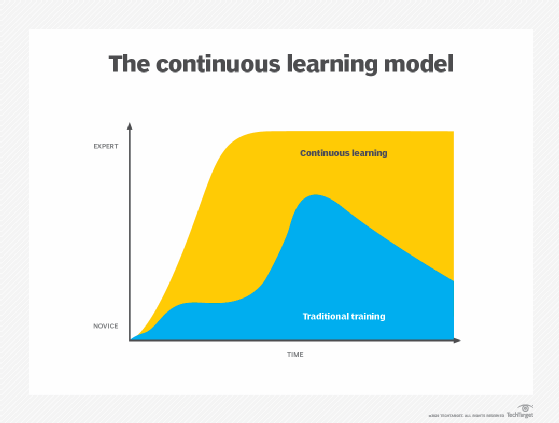Core competencies: What they are and how they lead to success
What are core competencies?
For any organization, its core competencies refer to the capabilities, knowledge, skills and resources that constitute its defining strengths. Core competencies distinguish a company from other organizations and are, therefore, not easily replicated by those organizations, whether they're existing competitors or new entrants into its market.
An organization's core competencies -- sometimes called core capabilities or distinctive competencies -- explain what it can do better than other companies and why. They provide a strong foundation from which an organization can deliver value to customers and stakeholders, while seizing new opportunities that lead to growth. Core competencies set the company apart from its peers and help create a sustained competitive advantage in its industry or sector.
A company can have one or more core competencies, many of which can vary significantly within or across industries. The following types illustrate some of the ways that organizations use core competencies to stand out from their competitors:
- Product quality. The company might emphasize quality over other considerations, such as price or innovation. Its products are more durable, reliable, better performing or in other ways superior to the competition. The company has a reputation for high quality and often sets the standard within its industry.
- Buying power. A large, established company often has significant buying power, making it possible to buy in larger quantities and at lower prices. These savings can then be passed to customers, sometimes at prices below the competition.
- Customer service. Exceptional customer service can be an effective way for an organization to distinguish themselves. By prioritizing customer service and support during and after the consumer has made their purchases, can ensure customer loyalty. Customer services should be professional, consistent and easy to access, with issues resolved to the customer's satisfaction.
- Design or innovation. Superior product design and innovation can help a company stand out from its competitors. An organization that combines both innovation and cutting-edge design can have a significant edge over the competition and earn a reputation for market leadership.
- Sales and marketing. Some organizations stand out not because they have the most innovative or highest quality products, but because they market those products more effectively than other companies. Their marketing is often clever, original, memorable, persuasive or in other ways highly effective at making their products captivating to consumers.
- Efficiency. An organization might be known for updating products sooner, producing them faster, delivering services more quickly, or in other ways demonstrating that its product delivery is reliable, consistent and predictable.
- Value. An organization might offer products that customers believe offer the best value proposition. Their products might not be the cheapest or the highest quality, but they strike the right balance between cost and quality in a way that convinces customers that they're getting the most for their money.
Each competency is a positive characteristic that contributes to the company's unique positioning. The more clearly that an organization defines its core competencies and the more effectively it uses those competencies, the more difficult it becomes for competitors to imitate the company's offerings or replicate its success. For this reason, identifying core competencies is a crucial step in strategic planning.
What is a core competency example?
Core competencies vary by industry. What is considered important in one industry might not resonate in another. Regardless of the industry, a company that can distinguish itself by its core competencies, while uniquely combining them with other qualities, often has a competitive advantage over its peers.
For example, Southwest Airlines built a strong position in the competitive airline industry by focusing on its core competencies. As detailed in Mukund Srinivasan's airline industry blog post, the airline has three core competencies: keeping operational costs low (largely but not entirely through route efficiency), delivering award-winning customer service and creating a fun work culture that promotes employee loyalty.
Many of the world's largest and most successful companies got there through a similar focus on their core competencies (see more real-world examples below).

Evolution of the idea of core competency
The concept of core competency is widely accepted today. It was first proposed in 1990 in the Harvard Business Review (HBR) article "The Core Competence of the Corporation" by C.K. Prahalad and Gary Hamel. In this influential piece, the authors suggest that a company's core competence is the "most powerful way to prevail" in global commerce and "adapt quickly to changing opportunities."
The authors believe that business managers and leaders should be judged based on their ability to "identify, cultivate, and exploit the core competencies that make growth possible." This is in contrast to the 1980s, when the focus was on streamlining, restructuring and decluttering organizations.
According to Prahalad and Hamel, a diversified corporation should view itself as "a portfolio of competencies," rather than a portfolio of products and businesses. They contend that a core competence encompasses collective learning, technology integration, communication, leadership and a commitment to working across the organization's boundaries. Such concepts have encouraged business leaders to rethink the concept of the corporation itself.
In recent years, a variation on core competence has emerged that focuses on individuals. This idea suggests that job seekers should develop and promote their personal core competencies or specific abilities to stand out in the job market. For example, a job candidate's resume might include the following:
- Analytical abilities.
- Communication skills.
- Digital literacy.
- Problem-solving.
- Decision-making.
- Interpersonal/relationship-building skills.
- Cultural competency.
- Business acumen.
3 key characteristics of a core competency
Prahalad and Hamel, in their HBR article, list the following three primary conditions a business activity must satisfy to be considered a core competence:
- It should provide potential access to a wide variety of markets.
- It should provide superior value (e.g., benefits) to the customer or consumer.
- It should not be easy to replicate or imitate.
The authors cite Honda to illustrate this concept -- Honda's core competencies in engines and power trains enabled the company to deliver superior benefits to its customers. These capabilities gave Honda competitive advantages in the auto, motorcycle, lawnmower and generator industries. At the time, no other company could match Honda's unique and powerful capabilities.
How to identify core competencies
An organization might be able to identify its core competencies because they emerge naturally while carrying out business. Or the organization might need to make a more concerted effort to get to the heart of its competencies. The following methods represent some strategies that businesses can use to help identify their core competencies:
- Look within. An organization should review its mission statement, previous initiatives, product successes, marketing campaigns, branding efforts and other internal sources and activities to help narrow down potential competencies. The organization should also try to identify what makes the company stand out from other businesses.
- Talk to employees. Employees have a unique perspective on the organization's products and services and how customers respond to them. This information can help the organization determine where it excels and its position in the market.
- Listen to customers and others. An organization's customers can be an excellent resource when trying to identify where the company excels and what works or doesn't work. The company should also get feedback from other outside sources, such as tracking what people are saying on social media.
- Check the competition. An organization should track what its competitors are doing and how its own products and services differ from theirs. The better the organization understands how it stands out from the competition, the more effectively it can leverage those differences.
Developing core competencies
After an organization identifies its core competencies, it should invest in reinforcing and building on them. To this end, the company should incorporate the competencies into its business strategies, product planning, marketing campaigns and other initiatives. The company should also invest resources into building and maintaining skills that contribute to these competencies.
With a well-defined set of competencies in place, the company can develop them into organization-wide strengths that help set it apart from its competitors, while delivering enhanced value to its customers. This approach is similar to how Southwest Airlines stood out with superior service and a fun work culture.
An organization should focus resources on its core competencies and strengthen its competitive position. This often involves outsourcing or divesting areas that fall outside its primary expertise or focus. Such streamlining was commonplace in the 1980s, as Prahalad and Hamel pointed out, and the practice remains relevant today.

More real-world examples of core competencies
Three of the best examples of companies that have enjoyed sustained success by focusing on their core competencies are the following:
- McDonald's most noteworthy core competence is its ability to standardize its food service and delivery processes. Every McDonald's offering tastes and looks exactly the same, regardless of its geographical location or outlet -- after accounting for local tastes and exceptions. Since customers always know what they will get when they order a Big Mac or Chicken McNuggets, they trust the brand, which continues to drive McDonald's success.
- Apple has a unique ability to design and produce electronic devices that appeal to consumers' aesthetic sensibilities and material aspirations, such as the iPhone, iMac and iPad. Each product boasts attractive visual designs and tactile appeal, while providing exceptional reliability and performance. These traits have allowed Apple to achieve the status of one of the world's most valuable companies in current market capitalization.
- Walmart has the buying power that even its closest competitors cannot match. The company's massive supply chain operations allow it to buy products in bulk and at low rates, and then undersell its competitors to attract and retain customers.
Every business should aim to maximize its core competencies across all areas of operations, including advertising, marketing, product development and human resource management. This holistic approach can empower a company to pursue long-term growth and success. In many cases, an organization will need to develop more than one competency to maintain and improve its competitiveness and unique market position.
Identifying core competencies is a crucial step in strategic planning, and Information technology is a key part of developing an effective strategic plan. Look at these eight free IT strategic planning templates that can help make IT a driving force in a business.






